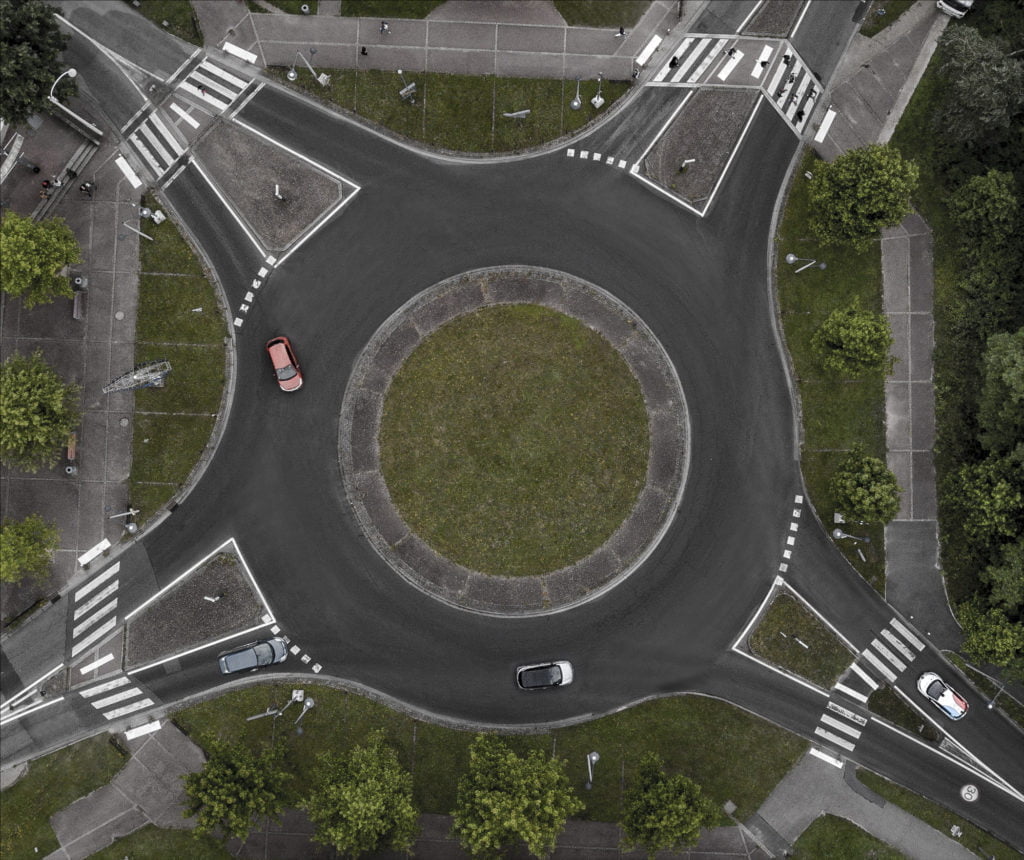Self improvement
The Metropolitan area of Rouen Normandy in France is the host of a première in Europe! The metropolitan authority, in cooperation with a group of local and national partners, is testing a service of on-demand automated shared cars in an open urban road environment. Thomas Mourey reports
Located in the Seine Valley between Paris and the seafront of Le Havre, the Metropolitan area of Rouen Normandy is home to approximately 500,000 inhabitants, spreads over a territory of 664 km2 and is made up of 71 municipalities, among which Saint-Etienne-du-Rouvray is hosting one of the most innovative trials of automated vehicles in Europe.
While tests of automated shuttles are implemented in an increasing number of locations, Rouen Normandy Autonomous Lab has been innovative and introduced a new concept in Europe: a combination of on-demand car-sharing system with automation technology.
The test is implemented by the sconsortium of Rouen Normandy Autonomous Lab that includes local and regional authorities, namely Rouen Normandy Metropolitan authority and the Normandy region, as well as a vehicle manufacturer (Renault), an operator (Transdev Rouen) and an insurance group (Matmut) with the support of financers (Caisse des dépôts and the European Union’s ERDF).
 Innovation in practice: the concept
Innovation in practice: the concept
In Saint-Etienne-du-Rouvray, only a few kilometres away from Rouen city centre, five automated vehicles operate on three defined routes. Since September 2018, registered participants can call one of the vehicles via a dedicated app. The vehicle comes and picks the passenger at one of the 17 stops and transports him/her to the stop selected by the passenger.
What makes the test in Rouen even more innovative is that the automated vehicles operate in a completely open environment where they must deal with interactions with other vehicles and road users. In addition, the vehicles drive at a typical urban transport speed, up to 30km/h.
Driverless, really?
During the test, and because of the strict legislation, a ‘safety driver’ is present in all vehicles, at all times. The role of this operator is to ensure a human control over the vehicle in case of technological failures or problems. In the future, new legislations are expected to allow vehicles to drive without any human on board. Human supervision is also ensured by an operator in a remote control centre.
In addition to the human presence, connectivity is key for the success of such a project. In Rouen, vehicles are making use of a complete set of on-board technology devices (e.g. sensors, radars, lidars) which can detect obstacles placed on the road or road users moving near the vehicle. This technology is complemented with a continuous communication flow with elements placed on the test routes which provide further information to the system (e.g. a camera can inform the vehicles on the presence of pedestrians on a zebra crossing). This communication between the vehicles and the environment is key to ensure that cars and shuttles operate safely.
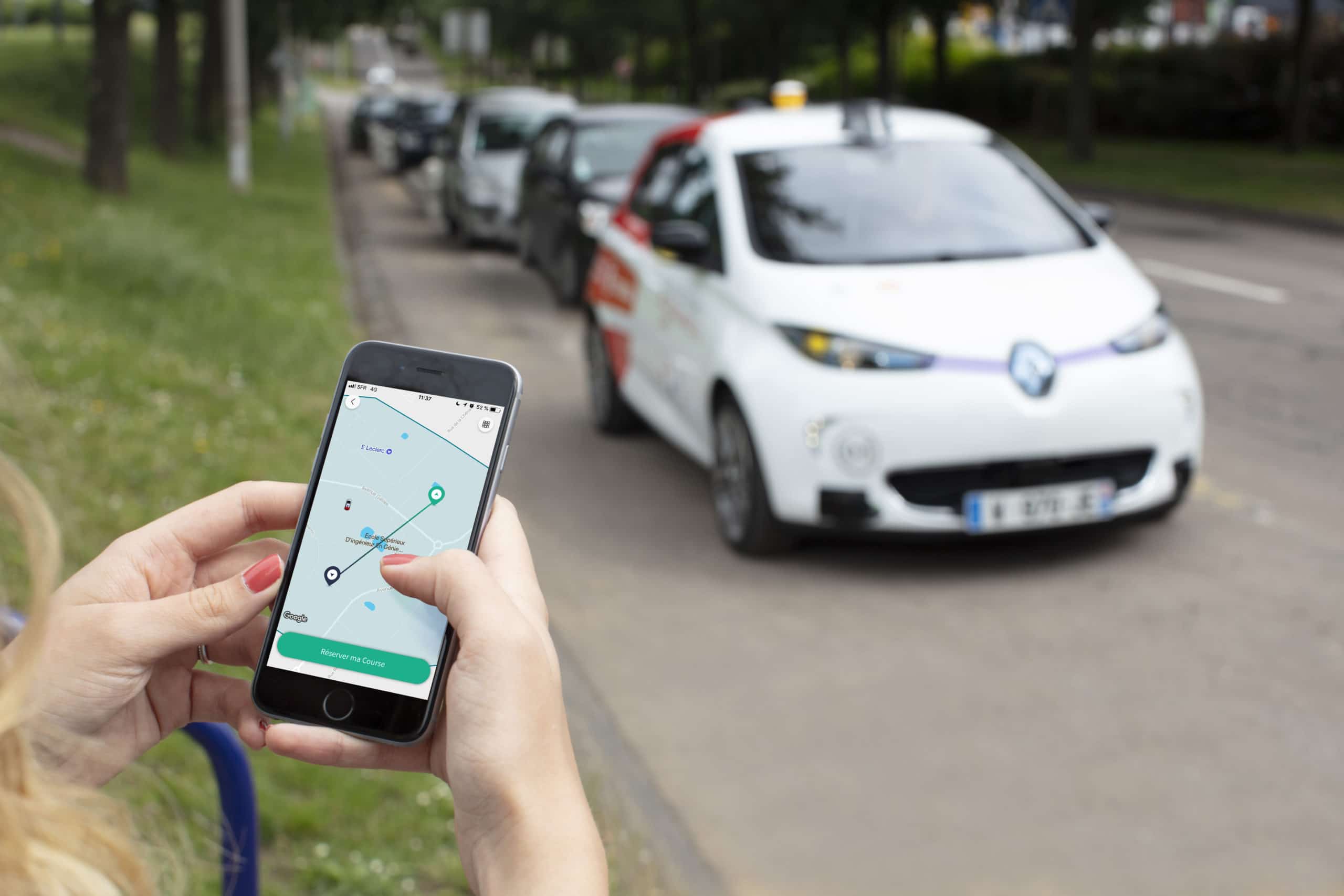
The automated vehicle can be ordered directly via a mobile app
Automated vehicles: What for?
This demonstration is highly innovative and is also an example of how local authorities can use automated vehicles to provide relevant mobility services in different parts of urban areas.
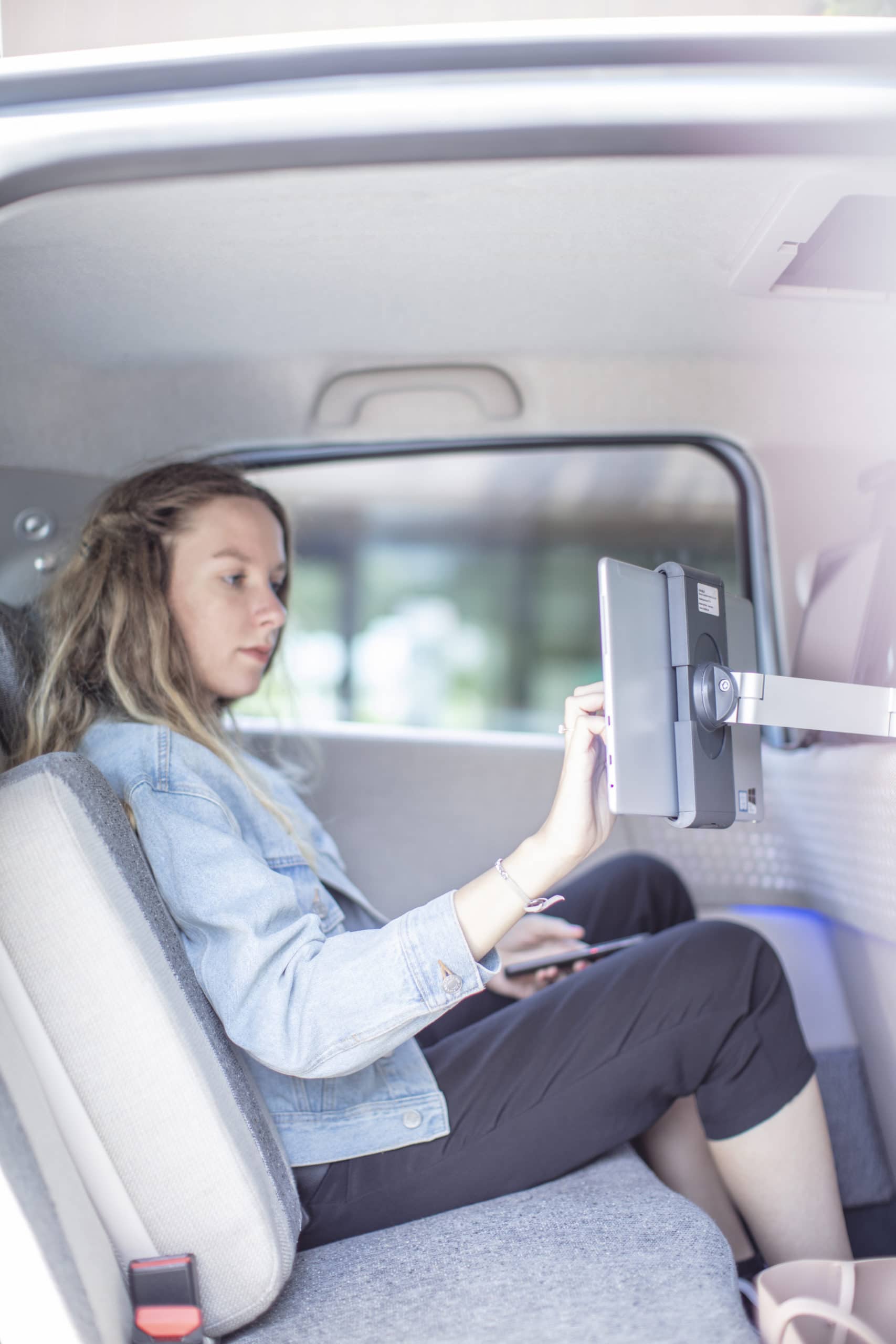
The Rouen Normandy Autonomous Lab vehicles operate in a part of the metropolitan area where public transport is not necessarily adapted, particularly because of the lower demand. Indeed, the test site includes a technology campus with universities and innovative companies, a shopping area and a more residential part.
Therefore, a fleet of a few vehicles has been adapted to this type of environment and the related lower demand. In addition, the on-demand operation allows to provide a service that answers a specific transport need. Additionally, the use of automated vehicles has the potential to decrease the operational costs and to propose a service for a longer time period (and potentially non-stop). However, during the test phase, the service is available only between 08:00 and 18:00.
Rouen Normandy Autonomous Lab has been innovative and introduced a new concept in Europe: a combination of on-demand car-sharing system with automation technology
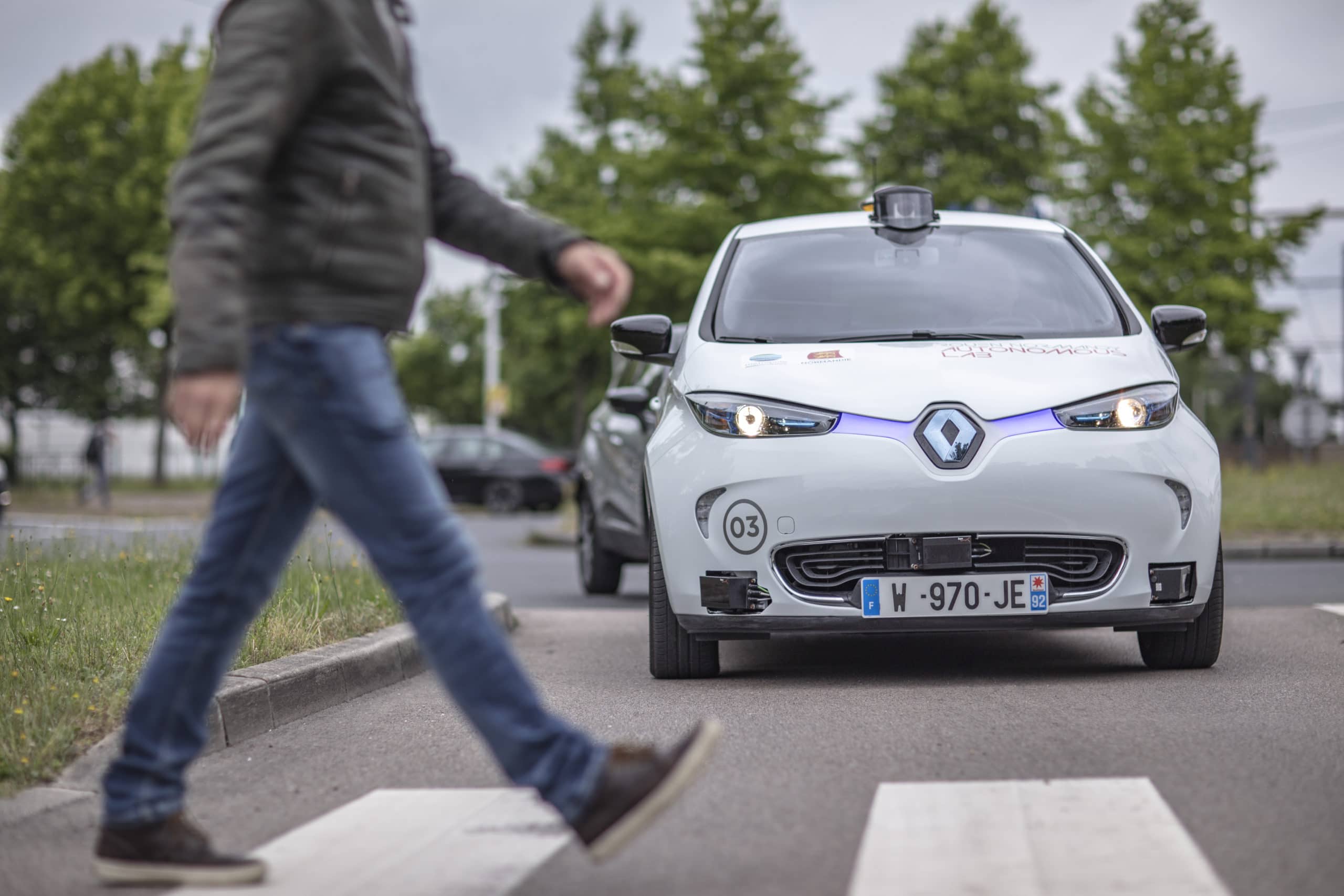 The local authorities and operators see the service as a complement to the existing public transport offer. The vehicles drive on three pre-defined routes connected to the main tram station which link this neighbourhood with the centre of the metropolitan area. Then, the transport within the neighbourhood is ensured by the Rouen Normandy Autonomous Lab vehicles. The fact that the vehicles transport passengers on these three routes also allows the authorities to keep a control on the area covered by the service and to maintain it in an area that needs a transport service.
The local authorities and operators see the service as a complement to the existing public transport offer. The vehicles drive on three pre-defined routes connected to the main tram station which link this neighbourhood with the centre of the metropolitan area. Then, the transport within the neighbourhood is ensured by the Rouen Normandy Autonomous Lab vehicles. The fact that the vehicles transport passengers on these three routes also allows the authorities to keep a control on the area covered by the service and to maintain it in an area that needs a transport service.
This demonstration is highly innovative and is also an example of how local authorities can use automated vehicles to provide relevant mobility services in different parts of urban areas
Additionally, the four Renault Zoe cars and the automated shuttle that are used by Rouen Normandy Autonomous Lab are all running on electricity and have therefore a limited impact in terms of emissions and noise pollution.
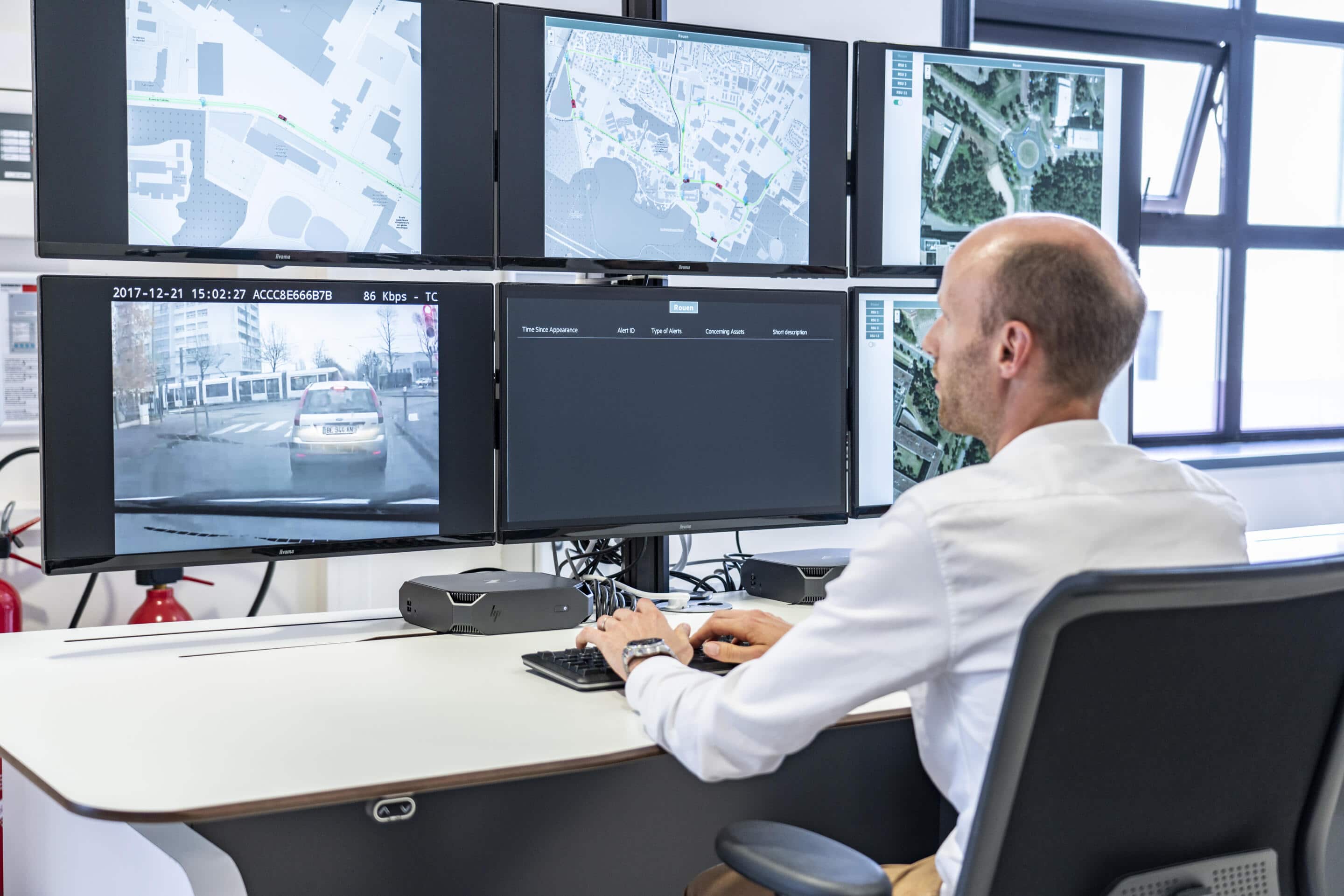
Human supervision and connectivity are key to ensure a safe implementation of the demonstration activities
To decrease the dependency of local residents on the individual car, the Metropolitan authority of Rouen has built a mobility strategy on five main pillars. Rouen Normandy Autonomous Lab responds to the focus of these five pillars:
- Change the concept of public transport by introducing automated vehicles. The metropolitan authority believes that the introduction of automated mobility can be a revolution in public transport and be beneficial for the society. The conditions for a positive and meaningful transition include the use of zero-emission vehicles, the fact that vehicles are shared and finally the operation of the automated car-sharing system in relation with a public transport scheme. These conditions are all met by the Rouen Normandy Autonomous Lab project.
- Decrease the carbon and environmental footprint of mobility. The Rouen Normandy Autonomous Lab project uses electric vehicles which do not emit (locally) greenhouse gases and pollutants. In addition, by linking the service to public transport, it encourages residents to use sustainable multimodal solutions. It therefore has the potential to contribute to the improvement of local public health and global climate change.
- Free public space up and reconquer it. Shared mobility is at the core of the Rouen Normandy Autonomous Lab project. Car-sharing can decrease the car-ownership rate and the total number of vehicles in the city. Less vehicles means less space used for parking and road operation, which can be re-allocated to other modes, including active mobility and public transport, and to other activities. In addition, automated vehicles don’t need to park close to the final trip destination as they can drive to a parking place located in a more relevant place or directly drive to pick up the next passenger – and therefore free up some additional space.
- Interoperability and IT solutions. The Rouen Normandy Autonomous Lab is strongly relying on IT solutions for the on-demand transport solution it provides. In addition, by linking the automated car-sharing service to the tram network, the project encourages interoperability, between modes. This concept could fit in a wider mobility service offer, and potentially be integrated in a future MaaS scheme.
- Foster innovation and accompany changes. The Rouen Normandy Autonomous Lab fits perfectly in the vision of the metropolitan authorities for fostering innovation. The test period allows to trial a technology, to improve a mobility service and to adapt it to the local context. In addition, the demonstration allows residents to get familiar with the solutions and facilitates the introduction of permanent services.
Thomas Mourey is Project Manager at Polis
TMourey@polisnetwork.eu
For more information contact:
Catherine Goniot, Vice Director public space and sustainable mobility at Metropole Rouen Normandie
Catherine.GONIOT@metropole-rouen-normandie.fr
